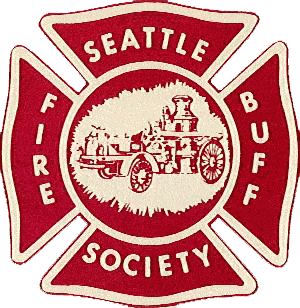On October 25, 2013, aircraft rescue firefighters with the Port of Seattle Fire Department (POSFD) were training at a Washington State Patrol fire training center in North Bend, when their otherwise-carefully-orchestrated live burn went sideways. Instead of extinguishing the flames on the burn prop, a fire truck’s master stream created an enormous fireball.
And the prop wouldn’t turn off.
And there was minimal water pressure.
This video presents new footage from the incident, along with footage from an unrelated training incident. According to Katie Rasmussen, a spokesperson for Washington State Patrol’s Fire Training Academy (WSFTA), the ARFF prop has been out of service since the 2013 incident.
The following is adapted from the report of Kevin Garling, who in 2014 was a battalion chief for Kent Regional Fire Authority.
Maintenance of the ARFF prop had been the sole responsibility of WSFTA staff, and at the time of the incident, there had been a total changeover in the maintenance personnel responsible for the props.
The training on October 25th was otherwise-routine annual training conducted by the Port of Seattle Fire Department (POSFD), but recent prior trainings revealed issues with the props.
10/14
After an initial routine morning of training the ARFF prop experienced an ignition failure. Maintenance staff were notified and attempts to fix the issue were unsuccessful. Training was completed using an alternate ignition method.
10/21
After several training evolutions, a black sludge was observed coming out of the hydrants being used to refill the crash trucks. According to the statement of Todd Starkey, a Captain with the POSFD and longtime state certified prop operator who was present, the sludge had never been seen before, and after a brief discussion with maintenance staff it was decided to halt training for the day. The water/sludge that was in the crash trucks was ordered to be processed back into the prop for recycling through the props’ oil/water separator. Since POSFD was going to conduct additional training on October 25, Starkey stressed to maintenance staff that the hydrant system needed to be flushed prior to their upcoming training. Captain Starkey was assured that system would be flushed prior to that training, and confirmed the same by phone just prior to the training.
10/25
At approximately 0730 Shane Hughes, William Catlow, and Starkey entered the pump house building to turn on pumps. Hughes was part of the full time staff at the academy and Catlow was the state ARFF instructor for the day. They found what they described as a large amount of fuel-rich water on the floor of the building as well as a strong fuel smell inside the building. The water/fuel separator was still in operation. Hughes phoned Mika Elo, the maintenance supervisor for the academy, and Elo advised Hughes how to shut down the separator.
Elo made a phone call to Levi Scartozzi to discuss the situation. Although Elo was maintenance supervisor, he had been at the academy a limited amount of time and Scartozzi had more experience with the prop. After the call Elo advised POSFD that the situation had happened before and training could continue.
Around this time Starkey was informed by POSFD crews that the hydrant water still had the same issues with discoloration and sludge that had shut down training on 10/21. Starkey discovered that the system had not been flushed and per his statement he gave the order to have the hydrant water flushed back into the prop for recycling. Instead, the hydrants were flushed onto the drill ground which (a) created an environmental problem, and (b) reduced the water supply by thousands of gallons, since the props and hydrants operated on a closed system.
The first evolutions of the day were routine, although POSFD firefighter’s stated that the fuel smell in the hydrant water was stronger than normal for the system. There was concern stated by some of the POSFD personnel that the concentration of fuel in the water system would contaminate their bunker gear and one firefighter stated that he did not wear his structural firefighting gloves when filling the crash truck from the hydrant for fear of contaminating the gloves. The hand line evolution portion of the training started out routine with all personnel in appropriate positions. Starkey and Kruckenberg were in the control tower with Starkey at the controls and Kruckenberg, acting as the site safety officer, nearby in the tower. Problems were apparent from the beginning.
In the control tower, Starkey hit the emergency shutdown button. It had no effect on halting fire growth, which made little sense, because the emergency shutdown system automatically applied water to the props using small nozzles located on the props themselves. Fuel, instead of water, was being applied.
[To be continued shortly in a pinned comment. YouTube has a character limit for video descriptions.]
